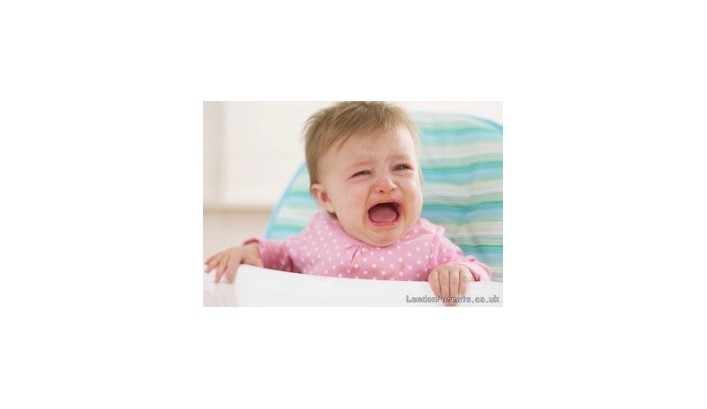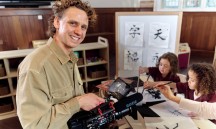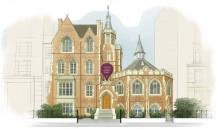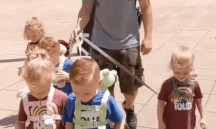Article Categories
News
-
20 July
-
04 November
-
10 July
-
12 June
-
05 June
-
24 September
-
19 September
-
10 May
-
26 April
Website Categories
Emergency procedures every parent should know
 Every year, more than two million children end up in hospital after an accident, half of which happen at home. Would you know what to do if your baby started choking or your toddler burned himself or had a fall? How you react in those first few minutes could make all the difference to your child – it could even save his life – so we’ve got everything you need to know right here.
Every year, more than two million children end up in hospital after an accident, half of which happen at home. Would you know what to do if your baby started choking or your toddler burned himself or had a fall? How you react in those first few minutes could make all the difference to your child – it could even save his life – so we’ve got everything you need to know right here.Choking
Each year, around 5,000 children had a choking accident that needed hospital treatment, according to the Child Accident Prevention Trust (CAPT), and half of these were under fives. Most of the accidents involved food, especially sweets.
‘It happened to me’
Rebecca Lawrence, 32, from Yorkshire, is mum to Jake, nine months and Evie, three.
‘Jake was eating a piece of apple when a bit lodged in his throat and he started coughing. My immediate reaction was panic, and although I’ve done two baby first aid courses, and knew I needed to turn him over and slap him on the back, in reality I froze. Luckily, my husband was there and he grabbed Jake and started hitting him on the back. The whole ordeal couldn’t have lasted longer than 40 seconds, but until Jake coughed up the piece, time seemed to stand still.
What to do if a baby (under one) is choking:
‘Never put your fingers down a child’s throat to get the object out as you could easily damage the delicate throat lining, which can swell up and restrict his breathing even more,’ says Joe Mulligan, First Aid specialist at the British Red Cross. ‘And never shake a baby or turn him upside down.’
• Lay him face down along your forearm, supporting his chin and shoulders with your hand. With your other hand give up to five sharp blows (hard enough to clear the obstruction, not hard enough to damage) between his shoulder blades, checking after each blow to see if the object has come out.
• If this doesn’t work, lay him on his back on your knee or along your forearm. Put two fingers on his breastbone, and push sharply upwards five times. This should make your baby cough up the object.
• If the object doesn’t clear after three cycles of back blows and chest thrusts, dial 999. Continue until help arrives and resuscitate if necessary.
What to do if a toddler (over one) is choking:
• ‘The first thing to do is encourage your child to cough as this is often enough to get the obstruction out,’ says Joe.
• Failing this, lay him face down over your lap and give up to five sharp blows between his shoulder blades.
• If this fails, stand behind him and place your fist on his upper abdomen and pull it sharply inwards and upwards in a swooping motion with your other hand. Do this up to five times.
• If the object doesn’t come out after three cycles of back blows and chest thrusts, call 999. Continue until help arrives and resuscitate if necessary.
Burns & scalds
A scald comes from a hot liquid, like a drink, while a burn is from a dry heat, like a hot cooker surface. Some 95% of burns in under fives happen at home, mostly in the kitchen.
‘It happened to me’
Teresa Lodge, 34, from North Somerset is mum to Jack, three and Max, one.
‘When Jack was 11 months old, he was just learning to pull himself up against things. I had made a cup of tea and rested it on the window sill, which I thought was well out of his reach, but as I turned back around, Jack pulled himself up, reached for the handle and tipped the boiling hot tea all over his face and chest.
‘Luckily I’d done first aid as part of my ante-natal classes and everything I’d learnt came flooding back. I grabbed Jack and rushed him into the bath and stuck him fully clothed under the cold tap. This eased his screams, and when I checked him, his face was slightly red but not as bad as I’d first thought. I carefully looked under his clothes and saw he had no major burns but I still took him straight to the doctors, still in wet clothes, and she checked him over.
She gave me some cream to soothe the redness and soreness and Jack made a full recovery. I’m just so glad I had my first aid training and I’d definitely recommend all mums go on a course.’
What to do:
‘Acting quickly will make a real difference as it has an impact on the long-term effects of a burn. Good, fast, first aid can reduce scarring and the need for plastic surgery,’ says Joe.
• Remove any clothing covering the burn or scald as it retains the heat, but if it’s stuck, don’t try to peel it off.
• Run the burnt skin under a cold tap for at least 10 minutes. ‘The motion of running water cools skin better than a bowl of water. The idea is to stop the burn going into the deeper layers of the skin,’ says Joe.
• Don’t apply antiseptic or creams, or cover the burn with a plaster. Never burst burn blisters as they protect the skin from infection.
• If the burn is on his face or head, or leaves anything more than a small red mark, cover the area with clingfilm or a plastic bag to prevent infection and take your child to hospital.
Bumps and falls
Falls are the most common cause of accidental injury to children, with around 391,000 children needing hospital treatment every year after falling at home, 60% of which were under five.
‘It happened to me’
Joy MacFarlane, 24, from Blantyre, near Glasgow, is mum to Samuel, two.
‘Samuel was 11 months old and was crawling up the stairs, with me behind him. I still don’t know how it happened, but Samuel managed to fall and dropped a flight of stairs - about five foot.
‘I ran down and picked him up and I noticed his eyes rolled slightly and he was very pale. My first instinct was to get him to hospital. We were there in five minutes, and he was seen by a nurse, but we had to wait for a while. An Xray showed he’d fractured his skull – I was devastated. Samuel had to be transferred to a children’s hospital where he stayed for two days observation – it was a terrifying experience.
‘Thankfully he’s made a full recovery and there are no lasting effects, but my biggest regret is not phoning an ambulance as we would have been seen much quicker. I would advise any mum in a similar situation to follow your instincts.’
What to do
‘If your child has fallen and hit his head then always take him to hospital and get it checked, even if there are no obvious signs of injury,’ says Isobel Sternfield, First Aid Training Officer for St John Ambulance.
• If he doesn’t seem injured after the fall/ knock, keep an eye on him for at least 24 hours as you won’t see the signs of compression (which is blood on the brain) from a head injury immediately.
• Look out for a change in your child’s behaviour, change of colour in his face or if his pupils become dilated or unequal. If any of these happen, go straight to hospital.
• If he hasn’t hit his head, look out for any signs of broken bones, such as if your child is persistantly crying or can’t move that part of his body. ‘Children are very resilient and often bounce off things, but if in doubt, ship ‘em out,’ says Isobel. In other words, always get him medically checked out if you’re worried.
*First aid courses and more advice*
• The British Red Cross and St John Ambulance run local first aid courses. Call 0870-170 9222 or visit redcross.org.uk/firstaid, or 08702-355321 or visit sja.org.uk for more information.
• Safe & Sound offer children’s first aid courses for parents and carers. They are offering a 20% discount to M&B readers on their courses. Call 020-8449 8722 or visit safeandsound.uk.net and quote M&B
• A useful book is First aid for babies and children fast (£9.99, British Red Cross) available from redcross.org.uk/shop (possibility of doing a giveaway – details to come)
Source: http://www.askamum.co.uk/Baby/Search-Results/Baby-safety/Emergency-procedures-every-parent-should-know/
Related articles
- Odyssey will open its first UK campus in Marylebone, London, April 2025 - - The award-winning global preschool for children 0-5 ...
Read moreEPIC GLOBAL PRESCHOOL, ODYSSEY, COMING T...
Londonnews554XXXAn award-winning preschool offering from Asia is to open its first campus in London, bringing a new global ‘limitless learning’...
Read moreParenting is no easy task, and for Jordan and Briana Driskell, raising their quintuplets—Zoey, Dakota, Hollyn, Asher, and Gavin&mdash...
Read more0 comments
No messages yet




